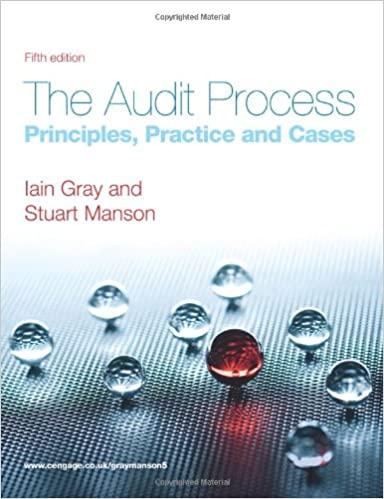Question
A partnership has decided to liquidate its operations. Prior to beginning the liquidation process, the partnership had cash balances of $12,000 and noncash assets of
A partnership has decided to liquidate its operations. Prior to beginning the liquidation process, the partnership had cash balances of $12,000 and noncash assets of $210,000. At that time liabilities were $125,000 of which $25,000 represented a note payable to Partner B. The capital information for the current partners is as follows:
Partner A PartnerB Partner C
Prot and loss percentages ............... 50% 30% 20%
Capital balances.......................... $75,000 $42,000 $(20,000)
The following events occurred over the four-month liquidation period, and it was decided that all available cash would be distributed at the end of each month.
Month 1Payments of $35,000 were received on accounts receivable with a book value of $43,000, and the balance of those accounts were written off. A $12,000 allowance for uncollectible accounts was established against the remaining receivables. Inventory with a book value of $70,000 was returned to vendors in exchange for full satisfaction of $62,000 of accounts payable. It was decided that a minimum cash balance of $5,000 should be maintained at month-end.
Month 2A division of the company was sold to an outside investor for $34,000. The book value of the divisions recognized net assets was $28,000, and they had a market value of $24,000. Any goodwill suggested by this transaction was to be recognized through the use of the bonus method. Equipment with a net book value of $15,000 and a market value of $20,000 was accepted by Partner Bin full satisfaction of their note payable. A customer contract valued at $24,000 was completed at a cost of $14,000. The customer paid for the goods less the $8,000 deposit previously paid. The deposit had been erroneously recorded as a sale when received. Professional fees associated with the liquidation were paid in the amount of $6,000, and it was agreed to retain another $4,000 in anticipation of future liquidation expenses.
Month 3Inventory with a book value of $15,000 was sold for $10,000. The partnership agreed to retain $4,000 against anticipated liquidation expenses. Partner C had personal assets of $85,000 and personal liabilities of $96,800. Partner C agreed to contribute personal assets to the partnership to whatever extent allowed by law. Partner B, who is Partner Cs brother, agreed to absorb any decit balance that Partner C was unable to eliminate and to absorb any subsequently realized decits that Partner C may be allocated. It was agreed to retain $4,000 in anticipation of future liquidation expenses.
Month 4The remaining assets were sold for $7,000, and nal liquidation expenses were paid in the amount of $4,500. REQUIRED: Prepare an installment liquidation schedule with all necessary supporting schedules.
1. Assuming new Partner D acquired 20% of Partner Bs interest from B for consideration of $15,000, what is Partner Bs capital balance after this transaction?
2. Assume that the above assets are understated by $25,000. If new Partner D were to acquire a 30% interest in the partnership by making a contribution of assets to the partnership, what would be the suggested value of the consideration?
3. If the above assets were overstated by $25,000, what amount of consideration should new Partner D convey to the partnership in exchange for a 25% interest in capital, keeping in mind that D would also be acquiring a 30% interest in prots?
4. If new Partner D conveyed assets with a fair market value of $66,000 to the partnership in exchange for a 30% interest in capital and a 25% interest in prots, what would be Bs capital balance after the transaction, assuming use of the bonus method?
5. Assume the same facts as item (4) above, except assume use of the goodwill method. What would be Bs capital balance after the transaction?
6. Assume that the above recognized assets are understated by $25,000 and new Partner D conveys assets with a fair market value of $70,000 to the partnership in exchange for a 30% interest in capital and a 25% interest in prots. What would be As capital balance after the transaction, assuming use of the bonus method?
7. Assuming the same facts as item (6) above, what amount of goodwill is suggested by the transaction?
8. Assume the same facts as item (7) above, except that Partner D acquired their interest for $25,000 cash. What amount of goodwill is suggested by the transaction?
9. Assume that Partner B sold their interest to the partnership for $51,000 and that previously recognized assets are understated by $30,000. What would be Partner As capital balance, assuming use of the goodwill method where goodwill traceable to the entire entity is recognized?
Step by Step Solution
There are 3 Steps involved in it
Step: 1

Get Instant Access to Expert-Tailored Solutions
See step-by-step solutions with expert insights and AI powered tools for academic success
Step: 2

Step: 3

Ace Your Homework with AI
Get the answers you need in no time with our AI-driven, step-by-step assistance
Get Started


